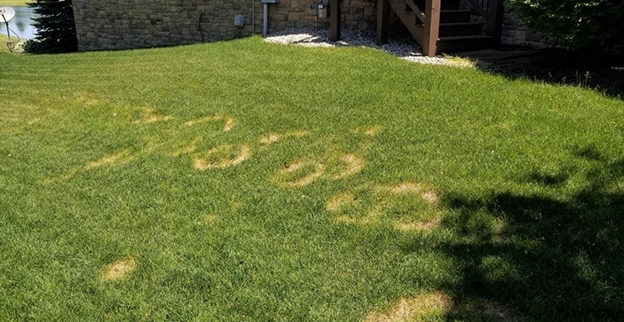Even the healthiest lawns can be affected by fungal infections, quickly turning your vibrant grass into a patchy, brown eyesore. The Lawn Pride® team understands the intricate balance required to maintain a healthy lawn free from fungal diseases.
Treatments for Every Type of Lawn Fungus
At Lawn Pride, we know that grass fungal infections can vary by location due to differences in climate, soil conditions, and local environmental factors.
Certain fungal pathogens thrive in specific climates or regions where the conditions are favorable for their growth. Regions with high humidity levels or frequent rainfall may be more prone to fungal infections.
Your Lawn Pride fungicide treatments professionals can help you tell the difference between dollar spot lawn disease and red thread. Just tell us a bit about what you’re seeing, and we’ll diagnose the issue and devise a plan of action.

Lawn Pride Professional Fungicide Treatment for Your Lawn
Our professional lawn fungicide treatments are specifically formulated to target and eliminate a wide range of lawn fungi.
-
Prevention
Our range of preventative treatments creates a protective barrier against common lawn fungi. By addressing potential issues before they arise, we can ensure your lawn stays healthy and disease-free.
-
Treatment
When a fungal disease takes over your lawn, it is important to move quickly. Our team of local lawn care specialists will diagnose the type of fungus and use the most effective fungicide.
-
Maintenance
Beyond addressing current fungal issues, our treatments also include measures to shield your lawn from future outbreaks. Our proactive strategies help ensure your lawn remains vibrant year-round.
Request a Free Lawn Fungicide Treatment Estimate Now!
With more than 40 years of experience helping homeowners keep their lawns looking beautiful and healthy, Lawn Pride is your local team for lawn care services. Each job is backed by our Neighborly Done Right Promise® — we get things done the right way.
We remove the guesswork from lawn care and provide you with treatments that work. On top of that, we offer free estimates for lawn fungicide treatments. To get started, contact us today!

Our Special Offers
We understand your goal to keep your lawn looking its best. We take pride in your lawn because we know you do, too. Check out our special offers to see how you can save on your next lawn care application.
Lawn Pride Programs
With Lawn Pride, you benefit from the experience of our dedicated team. Our professionals understand the complexities of lawn care and employ industry best practices to deliver optimal results. You can trust us to handle your lawn with care and precision.
-
7-Application Program
Learn More 7-Application ProgramOur lawn care program is tailored to meet your lawn's needs, helping it thrive to its fullest potential.
-
Grub Control
Learn More Grub ControlOur professionals provide expert care to protect your lawn from the damage caused by destructive grubs.
-
Tree & Shrub
Learn More Tree & ShrubEnsure the health and wellness of your trees and shrubs with our comprehensive program.
Customer Reviews
View All Reviews
The Neighborly Done Right Promise® delivered by LawnPride®, a proud Neighborly company.
Frequently Asked Questions About lawn Fungicide Treatments
At Lawn Pride, our services are safe for your family, pets, and the environment, ensuring peace of mind alongside a beautiful lawn. Our trained professionals are available to answer your questions and address your concerns.

Join Our Team
“We have the power to make things better.” That’s our mantra, not only for our customers' lawn issues, but also you, a future team member! At LawnPride, we provide a career path for growth and treat you like family. They know that a happy, motivated team is key to serving customers well. That's why we value integrity and respect and create a strong work ethic.



